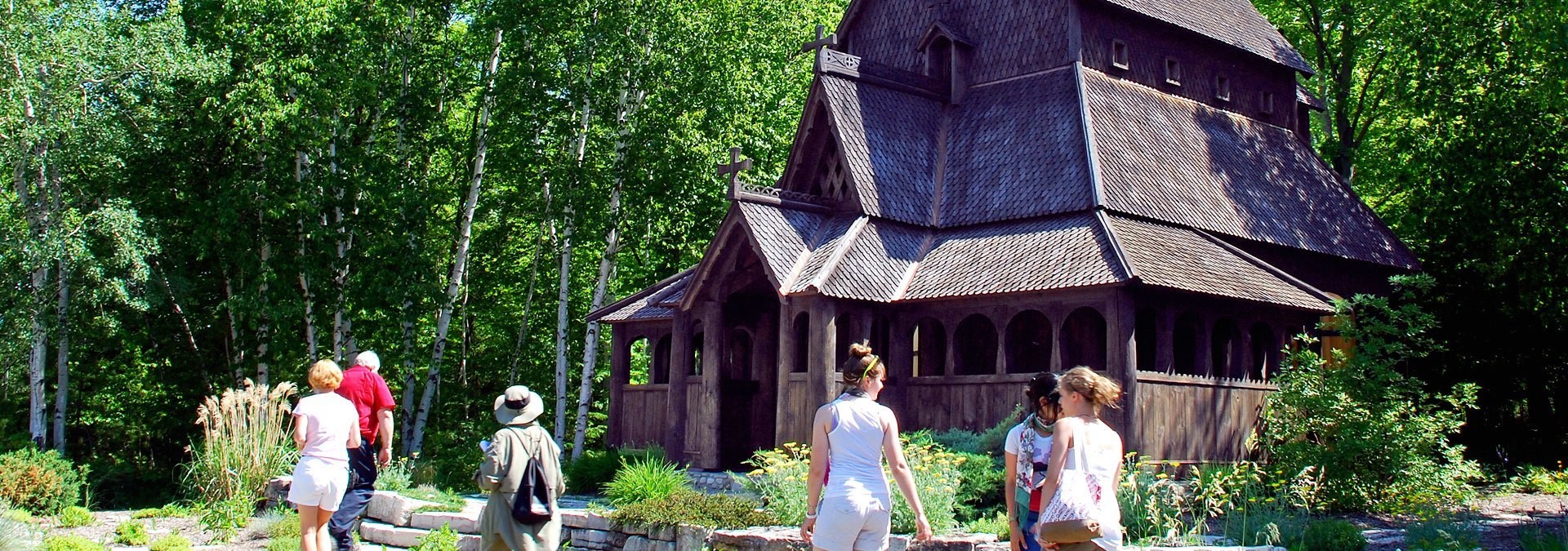
The Discovery of Door County of Door County
Published
Who Helped Discover the Door?
Discover the first inhabitants and early settlers that helped build this area into the thriving destination it is today. Learn about the history of the land, the tribes, and people who left everything they knew in search of opportunity here.
Inhabitants
While Paleo-Indian people were likely the first inhabitants of Wisconsin over 12,000 years ago, they moved frequently throughout the area. The first Paleo-Indians to inhabit the region that would become Door County are thought to date back 2,000 years with artifacts unearthed in Sturgeon Bay, and areas near Baileys Harbor and Jacksonport.
Native Americans
The Potawatomi and Winnebago tribes were the first to settle in the area with the Ojibwe, Sauk, Menominee, and Ottawa occupying nearby areas, though they wouldn’t be alone for long.
More on Native Americans in Door County
French Explorers
In search of a passage from the Atlantic Ocean to China, early French explorers arrived in the region in 1524, ultimately settling in modern-day Canada. As time went on, the settlers’ interest in the fur trade led to a migration inland and prompted a relationship between Native Americans and the French. Wisconsin’s fur trade grew over the next two hundred years with the economy heavily depending on it.
Jean Nicolet is the first known European to enter both Lake Michigan and Wisconsin on the search for the passage to China, ultimately landing on what is now Rock Island. Nicolet continued his journey to Green Bay, was met by members of the Winnebago tribe and later established a trading post there. The legend has it that Nicolet was dressed in traditional Chinese robes upon landing.
Missionaries
Following in the footsteps of the explorers before them, French Jesuit missionaries came to our area in an effort to convert the Native Americans to Christianity.
Permanent Settlers
The first permanent settlers came to the area around 1763 when Wisconsin was still under British control. Many of these settlers were French Canadians. The United States won its independence from Britain between 1776 and 1787.
Naming the Area
Many locals and visitors are familiar with the long history of shipwrecks in the treacherous waters between the northernmost tip of the County and Washington Island. But they may not know that large ships weren’t the only ones to succumb to the territory. Many Potawatomi and Winnebago lost tribe members trying to cross the passage in canoes, leading the Potawatomi to dub the waters the “Door of Death.”
Translated into French, it’s also known as “Ports des Morts” in English it is called “Death’s Door.” This is where the name Door County originated.
More on Origins of the "Door County" Name
Early Settlers
After the opening of the Erie Canal in 1825, many pioneers flooded westward through the new passage that made travel from the Atlantic through the Great Lakes easier. Some of the noteworthy settlers can be credited with establishing many of the industries that supported the area’s growth and their names may be found in some form in some of our 19 communities.
Increase Claflin, his wife Mary, and their 6 children arrived by boat in what is now Little Sturgeon Bay in 1835. They traded fur with the Menominee Indians and also farmed and raised horses. Years after settling, Claflin’s son-in-law Robert Stephenson dealt unfairly with the Native Americans, resulting in attacks. Around 1843, Claflin left his land in Little Sturgeon Bay, handing it over to Stephenson and settling just north, in present-day Fish Creek. Many members of the Claflin family are buried in this area, which is now part of Peninsula State Park.
After Wisconsin became a state in 1848, the vast amount of resources in the County drew in many fishermen, lumbermen, and settlers from all over Europe. The area built up so quickly that the majority of the communities were established in only a twenty-year period.
The oldest town in Door County, Baileys Harbor, was discovered by Captain Justice Bailey after a rough storm had him seeking refuge. Upon landing, Bailey reported the vast amount of timber and limestone the area possessed, and just a year later a crew built a pier and sawmill there. In just a year after building, they were shipping out nearly 2,500 cords of lumber.
Carlsville was originally established by settlers of Irish descent, followed quickly by a larger number of German settlers. The area got its name because of the number of men in the community named Karl. It was later altered to the English version you see today.
Ephraim was the first religious settlement founded by Reverend Andrew Iverson and three of his followers in 1853. This community of Norwegian Moravians built the first church and school in the County.
Fish Creek is known to be founded by Asa Thorp, despite Clafin residing in the area first. Thorp built the Fish Creek dock, which was the only place to refuel between Fort Howard and Rock Island. The village thrived and fishermen, farmers, and lumbermen moved there with their families. Thorp’s relatives Jacob and Levi Thorp coincidentally founded Egg Harbor.
By 1853 the Southern Door was populated heavily by Walloon-speaking Belgians who established the communities of Brussels and Namur. In present day, this area holds the largest concentration of Belgians in the United States. It is also listed on the National Register of Historic Places. The Belgian Society of Door County works to preserve the area’s history and offers tours that take you to see where these settlers lived, prayed and worked.
By 1870, Door County had nearly 5,000 residents. This number continued to rise, as did the lumber, fishing, and farming industries, forming the thriving area you know today.
For more information on Door County’s unique and diverse history, visit some of our numerous museums.
Sign up today!
Visit Door County virtually with monthly newsletter updates. Each issue is jam-packed with vacation ideas, special offers, recipes, festivals, events, and more.


